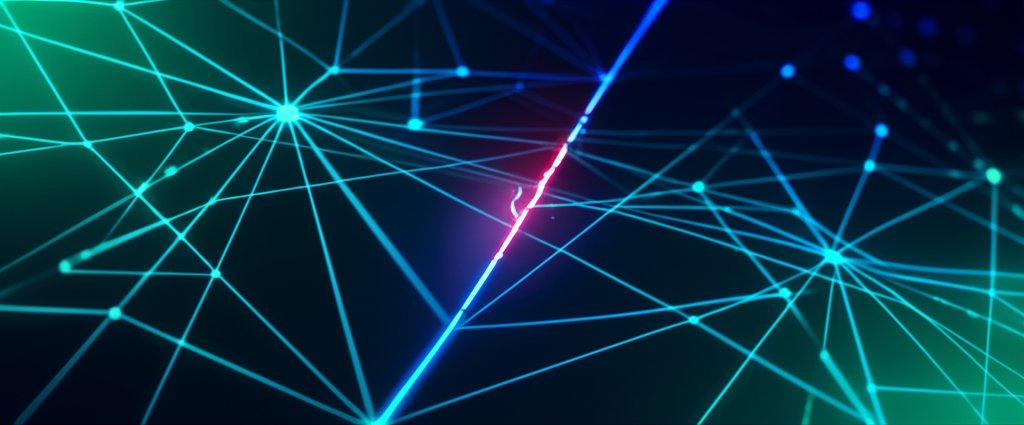In our increasingly connected world, digital threats are constantly evolving at an alarming pace. For years, we’ve all been warned about phishing—those deceptive emails designed to trick us into revealing sensitive information. But what if those emails weren’t just poorly-written scams, but highly sophisticated, personalized messages that are almost impossible to distinguish from legitimate communication? Welcome to the era of AI-powered phishing, where the lines between authentic interaction and malicious intent have never been blurrier.
Recent analyses show a staggering 300% increase in sophisticated, AI-generated phishing attempts targeting businesses and individuals over the past year alone. Imagine receiving an email that perfectly mimics your CEO’s writing style, references a project you’re actively working on, and urgently requests a sensitive action. This isn’t science fiction; it’s the new reality. We’re facing a profound shift in the cyber threat landscape, and it’s one that everyday internet users and small businesses critically need to understand.
Why are AI-powered phishing attacks so effective? Because they leverage advanced artificial intelligence to craft attacks that bypass our usual defenses and exploit our fundamental human trust. It’s a game-changer for cybercriminals, and frankly, it’s a wake-up call for us all.
In this comprehensive guide, we’ll demystify why these AI-powered attacks are so successful and, more importantly, equip you with practical, non-technical strategies to defend against them. We’ll explore crucial defenses like strengthening identity verification with Multi-Factor Authentication (MFA), adopting vigilant email and messaging habits, and understanding how to critically assess digital communications. We believe that knowledge is your best shield, and by understanding how these advanced scams work, you’ll be empowered to protect your digital life and your business effectively.
The Evolution of Phishing: From Crude Scams to AI-Powered Sophistication
Remember the classic phishing email? The one with glaring typos, awkward phrasing, and a generic “Dear Customer” greeting? Those were the tell-tale signs we learned to spot. Attackers relied on volume, hoping a few poorly-crafted messages would slip through the cracks. It wasn’t pretty, but it often worked against unsuspecting targets.
Fast forward to today, and AI has completely rewritten the script. Gone are the days of crude imitations; AI has ushered in what many are calling a “golden age of scammers.” This isn’t just about better grammar; it’s about intelligence, hyper-personalization, and a scale that traditional phishing couldn’t dream of achieving. It means attacks are now far harder to detect, blending seamlessly into your inbox and daily digital interactions. This represents a serious threat, and we’ve all got to adapt our defenses to meet it.
Why AI-Powered Phishing Attacks Are So Effective: Understanding the Hacker’s Advantage
So, what makes these new AI-powered scams so potent and incredibly dangerous? It boils down to a few key areas where artificial intelligence gives cybercriminals a massive, unprecedented advantage.
Hyper-Personalization at Scale: The AI Advantage in Phishing
This is arguably AI phishing’s deadliest weapon. AI can analyze vast amounts of publicly available data—think social media profiles, company websites, news articles, even your LinkedIn connections—to craft messages tailored specifically to you. No more generic greetings; AI can reference your recent job promotion, a specific project your company is working on, or even your personal interests. This level of detail makes the message feel incredibly convincing, bypassing your initial skepticism.
Imagine receiving an email that mentions a recent purchase you made, or a project your team is working on, seemingly from a colleague. This precision makes the message feel undeniably legitimate and bypasses your initial skepticism, making it incredibly easy to fall into the trap.
Flawless Grammar and Mimicked Communication Styles: Eliminating Red Flags
The old red flag of bad grammar? It’s largely gone. AI language models are exceptionally skilled at generating perfectly phrased, grammatically correct text. Beyond that, they can even mimic the writing style and tone of a trusted contact or organization. If your CEO typically uses a certain phrase or a specific tone in their emails, AI can replicate it, making a fraudulent message virtually indistinguishable from a genuine one.
The grammar checker, it seems, is now firmly on the hacker’s side, making their emails look legitimate and professional, erasing one of our most reliable indicators of a scam.
Deepfakes and Synthetic Media: The Rise of AI Voice and Video Scams (Vishing)
This is where things get truly chilling and deeply concerning. AI voice cloning (often called vishing, or voice phishing) and deepfake video technology can impersonate executives, colleagues, or even family members. Imagine getting an urgent phone call or a video message that looks and sounds exactly like your boss, urgently asking for a wire transfer or sensitive information. These fraudulent requests suddenly feel incredibly real and urgent, compelling immediate action.
There have been real-world cases of deepfake voices being used to defraud companies of significant sums. It’s a stark reminder that we can no longer rely solely on recognizing a familiar voice or face as definitive proof of identity.
Realistic Fake Websites and Landing Pages: Deceptive Digital Environments
AI doesn’t just write convincing emails; it also builds incredibly realistic fake websites and login portals. These aren’t crude imitations; they look exactly like the real thing, often with dynamic elements that make them harder for traditional security tools to detect. You might click a link in a convincing email, land on a website that perfectly mirrors your bank or a familiar service, and unwittingly hand over your login credentials.
These sophisticated sites are often generated rapidly and can even be randomized slightly to evade simple pattern-matching detection, making it alarmingly easy to give away your private information to cybercriminals.
Unprecedented Speed and Volume: Scaling Phishing Campaigns with AI
Cybercriminals no longer have to manually craft each spear phishing email. AI automates the creation and distribution of thousands, even millions, of highly targeted phishing campaigns simultaneously. This sheer volume overwhelms traditional defenses and human vigilance, significantly increasing the chances that someone, somewhere, will fall for the scam. Attackers can launch massive, custom-made campaigns faster than ever before, making their reach truly global and incredibly pervasive.
Adaptive Techniques: AI That Learns and Evolves in Real-Time
It’s not just about initial contact. Some advanced AI-powered attacks can even adapt in real-time. If a user interacts with a phishing email, the AI might tailor follow-up messages based on their responses, making subsequent interactions even more convincing and harder to detect. This dynamic nature means the attack isn’t static; it learns and evolves, constantly refining its approach to maximize success.
The Critical Impact of AI Phishing on Everyday Users and Small Businesses
What does this alarming evolution of cyber threats mean for you and your small business?
Increased Vulnerability for Smaller Entities
Small businesses and individual users are often prime targets for AI-powered phishing. Why? Because you typically have fewer resources, might lack dedicated IT security staff, and might not have the advanced security tools that larger corporations do. This makes you a more accessible and often more rewarding target for sophisticated AI-powered attackers, presenting a critical vulnerability.
Significant Financial and Reputational Risks
The consequences of a successful AI phishing attack can be severe and far-reaching. We’re talking about the potential for significant financial losses (e.g., fraudulent wire transfers, ransomware payments), devastating data breaches (compromising customer information, intellectual property, and sensitive business data), and severe, lasting damage to your reputation. For a small business, a single major breach can be catastrophic, potentially leading to closure.
Traditional Defenses Are Falling Short
Unfortunately, many conventional email filters and signature-based security systems are struggling to keep pace with these new threats. Because AI generates novel, unique content that doesn’t rely on known malicious patterns or easily detectable errors, these traditional defenses often fail, allowing sophisticated threats to land right in your inbox. This highlights the urgent need for updated defense strategies.
Defending Against AI-Powered Phishing: Essential Non-Technical Strategies for Everyone
This might sound intimidating, but it’s crucial to remember that you are not powerless. Your best defense is a combination of human vigilance, smart habits, and accessible tools. Here’s your essential non-technical toolkit to protect yourself and your business:
Level Up Your Security Awareness Training: Cultivating Critical Thinking
- “Does this feel right?” Always trust your gut instinct. If something seems unusual, too good to be true, or excessively urgent, pause and investigate further.
- Is this urgent request unusual? AI scams thrive on creating a sense of panic or extreme urgency. If your “boss” or “bank” is suddenly demanding an immediate action you wouldn’t typically expect, that’s a massive red flag.
- Train to recognize AI’s new tactics: Flawless grammar, hyper-personalization, and even mimicry of communication styles are now red flags, not green ones. Be especially wary of deepfake voices or unusual requests made over voice or video calls.
- Regular (even simple) phishing simulations: For small businesses, even a quick internal test where you send a mock phishing email can significantly boost employee awareness and preparedness.
Strengthen Identity Verification and Authentication: The Power of MFA
This is absolutely crucial and should be your top priority.
- Multi-Factor Authentication (MFA): If you take one thing away from this article, it’s this: enable MFA on every account possible. MFA adds an essential extra layer of security (like a code sent to your phone or a biometric scan) beyond just your password. Even if a hacker manages to steal your password through an AI phishing site, they cannot access your account without that second factor. It is your single most effective defense against credential theft.
- “Verify, Don’t Trust” Rule: This must become your mantra. If you receive a sensitive request (e.g., a wire transfer, a password change request, an urgent payment) via email, text message, or even a voice message, always verify it through a secondary, known channel. Do not reply to the suspicious message. Pick up the phone and call the person or company on a known, official phone number (not a number provided in the suspicious message). This simple, yet powerful step can thwart deepfake voice and video scams and prevent significant losses.
Adopt Smart Email and Messaging Habits: Vigilance in Your Inbox
A few simple, consistent habits can go a long way in protecting you:
- Scrutinize Sender Details: Even if the display name looks familiar, always check the actual email address. Is it “support@amazon.com” or “support@amazzon-online.co”? Look for subtle discrepancies, misspellings, or unusual domains.
- Hover Before You Click: On a desktop, hover your mouse over any link without clicking. A small pop-up will show you the actual destination URL. Does it look legitimate and match the expected website? On mobile devices, you can usually long-press a link to preview its destination. If it doesn’t match, don’t click it.
- Be Wary of Urgency and Emotional Manipulation: AI-powered scams are expertly designed to create a sense of panic, fear, or excitement to bypass your critical thinking. Any message demanding immediate action without time to verify should raise a massive red flag. Always take a moment to pause and think.
- Beware of Unusual Requests: If someone asks you for sensitive personal information (like your Social Security number or bank details) or to perform an unusual action (like purchasing gift cards or transferring funds to an unknown account), consider it highly suspicious, especially if it’s out of character for that person or organization.
Leverage Accessible AI-Powered Security Tools: Smart Protections
While we’re focusing on non-technical solutions, it’s worth noting that many modern email services (like Gmail, Outlook) and internet security software now incorporate AI for better threat detection. These tools can identify suspicious intent, behavioral anomalies, and new phishing patterns that traditional filters miss. Ensure you’re using services with these built-in protections, as they can offer an additional, powerful layer of defense without requiring you to be a cybersecurity expert.
Keep Software and Devices Updated: Closing Security Gaps
This one’s a classic for a reason and remains fundamental. Software updates aren’t just for new features; they often include crucial security patches against new vulnerabilities. Make sure your operating system, web browsers, antivirus software, and all applications are always up to date. Keeping your systems patched closes doors that attackers might otherwise exploit.
Cultivate a “Defense-in-Depth” Mindset: Multi-Layered Protection
Think of your digital security like an onion, with multiple protective layers. If one layer fails (e.g., you accidentally click a bad link), another layer (like MFA or your security software) can still catch the threat before it causes damage. This multi-layered approach means you’re not relying on a single point of failure. It gives you resilience and significantly stronger protection against evolving attacks.
Conclusion: Staying Ahead in the AI Phishing Arms Race
The battle against AI-powered phishing is undoubtedly ongoing, and the threats will continue to evolve in sophistication. Successfully navigating this landscape requires a dynamic partnership between human vigilance and smart technology. While AI makes scammers more powerful, it also makes our defenses stronger if we know how to use them and what to look for.
Your knowledge, your critical thinking, and your proactive, consistent defense are your best weapons against these evolving threats. Don’t let the sophistication of AI scare you; empower yourself with understanding and decisive action. Protect your digital life! Start with strong password practices and enable Multi-Factor Authentication on all your accounts today. Your security is truly in your hands.









